For those of you who’ve been itching for an experience extraordinaire that involves much more than sitting on a beach getting a tan or trekking your way through some of most cliched treks in the mountains, make sure you have a pen and paper handy. We bring to you a list of few of India’s incredibly gorgeous lakes, some of which you may not have even heard of before. Not only will you enjoy your journey through the treacherous roads in high altitudes, but also love the calm and quiet you earn for yourself after all the hard work. A statutory warning, before we start: the lakes are so clear and tempting that you can’t resist taking a dip, so you better know how to swim before you venture out.
-
Kareri Lake
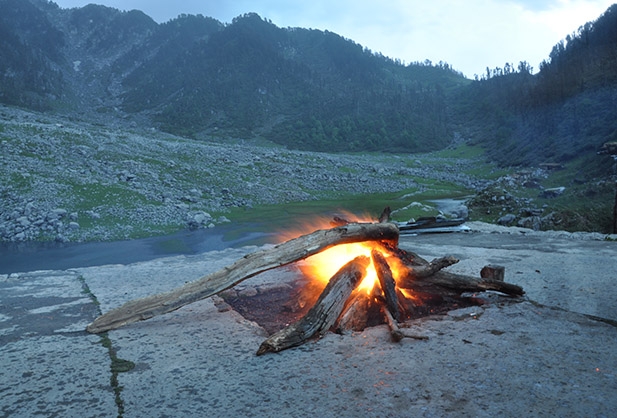
Where: Kangra, Himachal Pradesh
Also known as the Kumarwah Lake, situated 2,934 metres above sea level, the Kareri lake is a shallow glacial lake that is also the base camp to the Bleni Pass and the Minkiani Pass. Although many trek to Triund or Indrahar circuit when in Himachal Pradesh, but if you are one of those who seeks bliss of being one with nature, then Kareri is the place to be. You can choose to either homestay at the Kareri village or make arrangements to stay at the Forest Guest House. A guaranteed experience of a lifetime!
Best time to visit: April to June
-
Gurudongmar Lake
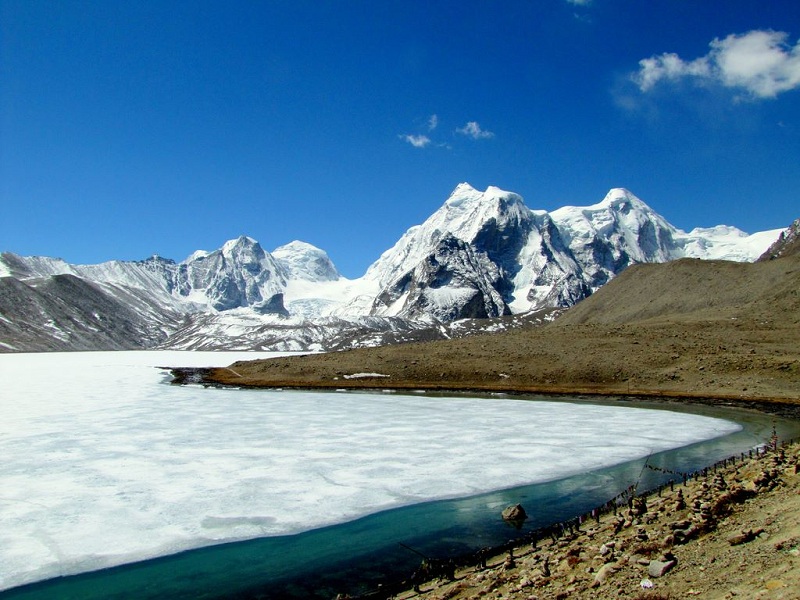
Where: Sikkim
Lo and behold! The Gurudongmar Lake is a high altitude lake located at 17,100 ft above the sea level and only 5 km from our neighboring country, Nepal. Snow-fed water of the lake serves as a source of Teesta river. It holds a special place in the hearts of the locals as this pristine lake’s water is supposed to miraculously bless childless couples with kids.You can trek from Gurudongmar lake to the other source of Teesta, Tso Lhmso lake, but only once you’ve been granted permission by the army.
Best time to visit: April to July
-
Tsongmo Lake
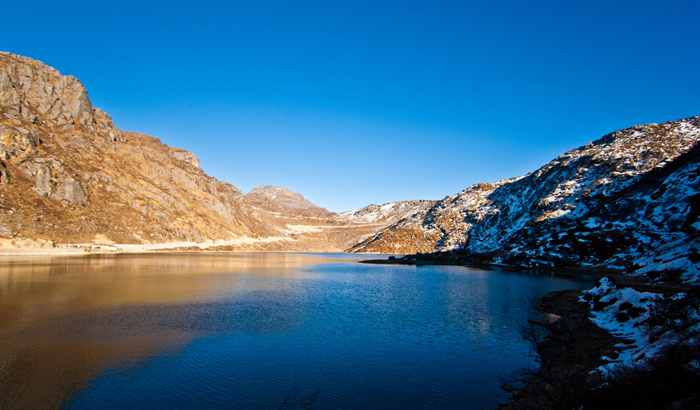
Where: Gangtok
With mesmerizing reflections of the mountains around it, the Tsongmo Lake, which literally translates to ‘source of water’, continues to top every tourist’s bucket list of high altitude glacial lakes. If you’re mapping your way through Gangtok, do visit the lake, but with inner line permit in place. Birders will find Brahmini ducks, flora enthusiasts will find rhododendrons, poppies and irises and for those of you who are religious can pay a visit to the Shiva temple on the lakeside.
Best time to visit: May to August
-
Chandra Taal
![Chandra Taal (meaning the Lake of the Moon), or Chandra Tal, is situated at an altitude of about 4,300 metres (14,100 ft) in the Himalayas.[1] Mountains of scree overlook the lake on one side, and a magnificent cirque presents a view on the other. The name of the lake originates from its crescent shape. Situated in the Spiti part of the Lahul and Spiti district of Himachal Pradesh (India),[1] Chandra Taal is a popular destination for trekkers and campers. The lake is accessible on foot from Batal as well as from Kunzum Pass from late May to early October.](https://bunny-wp-pullzone-5y8931bu1f.b-cdn.net/wp-content/uploads/2015/07/chandra-lake-1024x681.jpg)
Where: Spiti, Himachal Pradesh
The ‘Moon Lake’, which is perfectly blue in color, serves as a perfect ground for hikers to camp at because there’s no way they can’t give in to the temptation of lush green meadow, cover of blue sky overhead and the Chandra Bhaga mountain range that surrounds it! This sweet water lake is 2.5 km wide and if one were to believe the legends, fairies visit the lake at night. Other than birding and adoring the wide expanse, you can taste some Tibetan food at some of the eateries there. Planning a trip, already? We hope so!
Best time to visit: May to early October
-
Prashar Lake
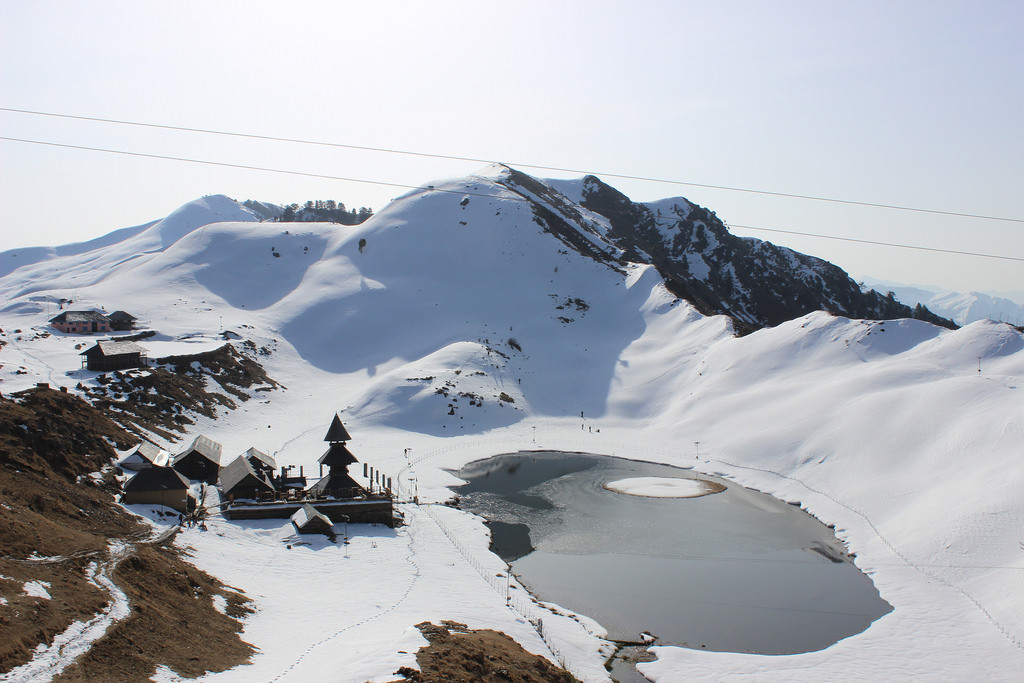
Where: Mandi, Himachal Pradesh
A trek through a trail of dense forests, rivulets and green pastures to reach the Prashar Lake promises an absolutely breathtaking 180 degree view of the Dhauladhar, Kinnaur and Pir Pinjal mountain ranges. You will be stunned by the lake that looks no less than a radiant blue mirror fitted on the ground and surrounded by lush meadows and cedar trees, especially post monsoon. If you love the snow, then do head out for a winter trek, but be well-equipped to deal with sudden shift of gears in the weather! Don’t forget to pay a visit to the pagoda-style temple dedicated to Sage Prashar.
Best time to visit: August to September and December to February for winter tree.
-
Lonar Lake
![Lonar Lake is a saline soda lake located at Lonar in Buldana district, Maharashtra, India, which was created by a meteor impact during the Pleistocene Epoch.[1] This lake, which lies in a basalt impact structure, is both saline and alkaline in nature. Geologists, ecologists, archaeologists, naturalists and astronomers have reported several studies on the various aspects of this crater lake ecosystem.[2] Lonar Lake has a mean diameter of 1.2 kilometres (3,900 ft) and is about 137 metres (449 ft) below the crater rim.](https://bunny-wp-pullzone-5y8931bu1f.b-cdn.net/wp-content/uploads/2015/07/lonar-lake-wallpaper-1024x683.jpg)
Where: Maharashtra
Other than the locals and some trekkers, not many know about the Lonar Crater Lake. It is earth’s only hyper-velocity impact crater in basaltic lake. It is alkaline and saline at the same time and has totally quizzed the NASA scientists. The trek to this picturesque lake is a treat for birdwatchers. While making their way though the dense forest they get to see local as well as migratory birds. Wildlife enthusiasts can enjoy the wilderness and animal life. Once you reach the lake you can visit some temples close by, like the partially submerged Shankar Ganesha temple, Kamalja Devi temple, Sita Nahani temple and Ram Gaya temple.
Best time to visit: All year long, except monsoons!
-
Pangong Tso Lake
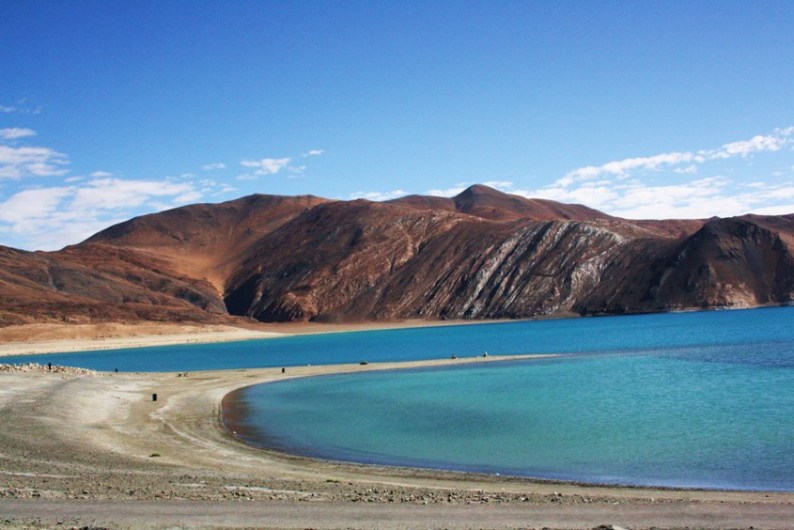
Where: Ladakh
This lake is situated at the highest motor-able point in India and is every photographer’s dream. Pangong Tso that stands for ‘long, narrow, enchanting’ in Tibetan, is actually the largest brackish water lake in Asia. This topaz blue beauty is worth a visit on your way to Chang La pass. The lake lies on the Sino Line of Actual Control because of which one third of the lake lies in India and the other two third lies in Tibet. The best way to explore the lake is to devour its beauty against the rising and setting sun while camping on the banks. So what are you waiting for Book your tickets now with cleartrip offers codes for Ladakh for enjoy.
Best time to visit: Visit in summers since it freezes during winters
-
Tso Moriri Lake
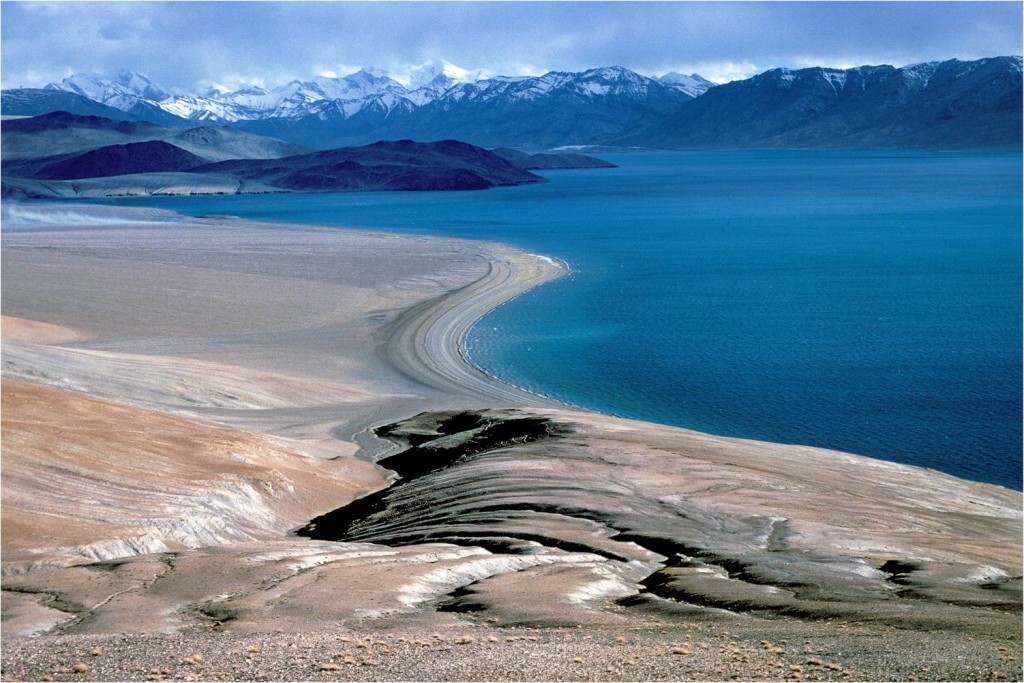
Where: Changthang Plateau, Jammu & Kashmir
The largest high-altitude lake, is not easily accessible to just anybody, since you need to have permits to visit this region. The ecosystem of this lake is considered fragile and in the efforts to protect it from any deterioration, the lake and the land around has been declared as a reserve. The view of the clear blue waters will leave you in an awe, and you’ll know they have done a good job conserving it. You will have to trek up to the point and then while you are there catch a glimpse of the amazing wildlife, camp and enjoy the serenity and take a dip in this swimming pool of Gods.
Best time to visit: May to September
We hope you have your backpacks ready and are marching your way into the wilderness for an invigorating experience.
@ Sharanya Manola
Also:
New Year Parties in Delhi – NCR
New Year Parties in Bangalore 2018


![Pangong Lake, is an endorheic lake in the Himalayas situated at a height of about 4,350 m (14,270 ft). It is 134 km (83 mi) long and extends from India to Tibet. Approximately 60% of the length of the lake lies in Tibet. The lake is 5 km (3.1 mi) wide at its broadest point. All together it covers 604 km2. During winter the lake freezes completely, despite being saline water. It is not part of Indus river basin area and geographically a separate land locked river basin.[3] The lake is in the process of being identified under the Ramsar Convention as a wetland of international importance. This will be the first trans-boundary wetland in South Asia under the convention.](https://bunny-wp-pullzone-5y8931bu1f.b-cdn.net/wp-content/uploads/2015/07/featured-image_lakes.jpg)







